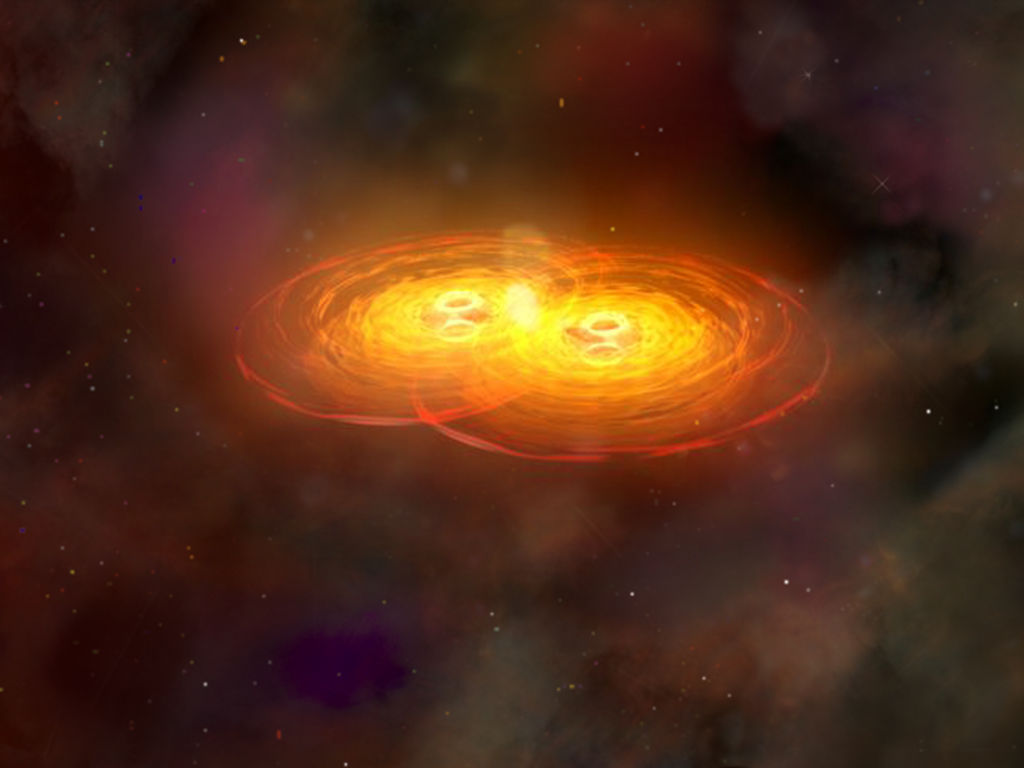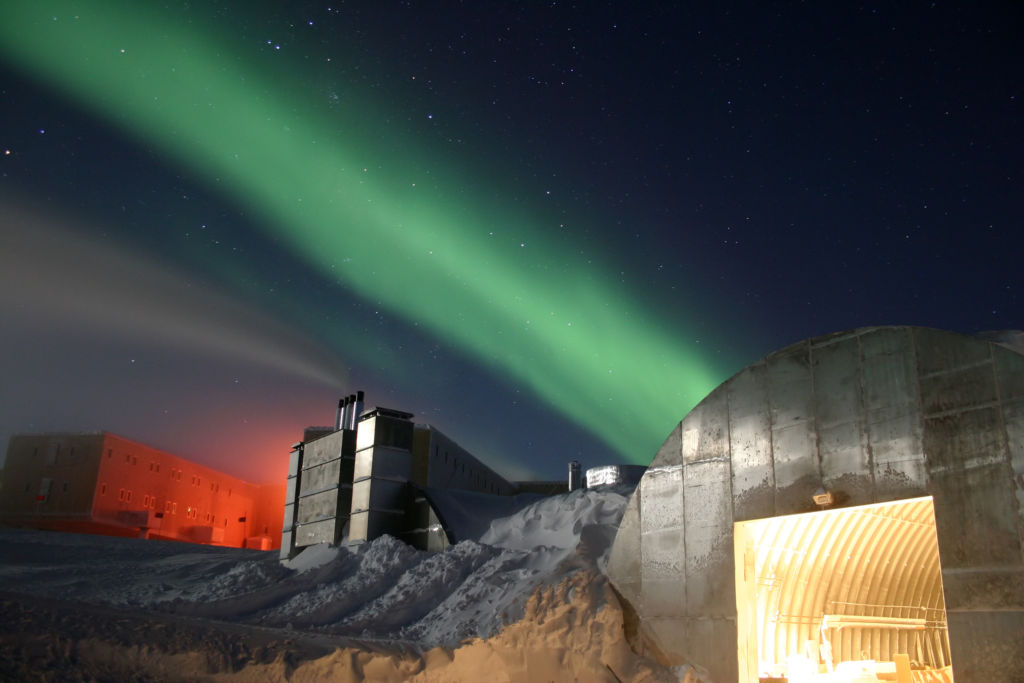On September 14, 2016, one of the greatest discoveries in Physics took place: Detection of Gravitational waves. Gravitational waves were theorized on the basis of General Relativity (GR) – a theory that famed Albert Einstein first came up with in 1916, and which states that the universe can be treated as a fabric of space and time. Einstein’s theory of GR treats gravity as a distortion in space-time caused by mass. Such distortion can be understood by picturing gravitational wells accompanying objects with mass. For example, an object with much greater mass has a much deeper gravitational well relative to a less massive object. This explains why the escape velocity of Earth (11.2 km/s) is much greater than the escape velocity of the Moon (2.4 km/s).
One observational evidence that was obtained to prove Einstein’s theory of GR is Gravitational Lensing. When space-time bends in the presence of massive objects, light traveling within that space bends as well. Therefore, the lens (massive object) acts as a cosmic telescope that bends the light coming from objects behind it. In 1919, Arthur Eddington used the total solar eclipse to catalog the discrepancies in the calculated position of stars that were located behind the sun, thus confirming Einstein’s theory.
Detection of Gravitational Waves
An decisive step in the quest for gravitational waves was the discovery of Black Holes. Black holes are regions in space-time, where gravity is so immense that nothing can escape from it. Thus, it creates a hole (or an infinitely deep curvature) in the space-time fabric, where information is permanently trapped. Black holes are formed when massive stars (> 20 masses of sun) collapse under their own gravity towards the end of their lives after undergoing supernovae forming explosion. Black holes are still a mystery in the science community because not one black hole has yet been directly imaged and the concept of singularity breaks the laws of physics.
According to Max Planck, there is a limit of how small the space can get such that the laws of gravity and space-time can still exist. However, singularity is defined as a point in space-time where gravity and density becomes infinite, hence, deviating from our current understanding of physics. Since the curvature of space-time is directly affected by massive objects, collision of such objects (ex: black holes) creates a disturbance in space-time, or ripples. In 2016, it was theorized that two black holes in a binary system merged and created a ripple. Similar to a ripple in a body of water here on Earth, the cosmic-ripple traveled across the space-time fabric and reached us. The Laser Interferometer Gravitational-Wave Observatory (LIGO) detected this ripple in 2016.

An artist’s rendition of two merging black holes. According to scientists, the merging of two black holes created a ripple in space-time. The ripple traveled across the universe and reached us in 2016 in the form of gravitational waves. Courtesy of Google images.
Neutrinos from Gravitational Waves
Song et. al tried to ask themselves whether it would be possible to detect neutrinos closely after detecting gravitational waves. Neutrinos are one of the subatomic particles that make up our universe. It is theorized that neutrinos are massless and electrically neutral. Due to electrical neutrality, they are are not affected by any of the electromagnetic forces. Hence, one main difference between the neutrinos and other subatomic particles is that neutrinos are only interacted by the weak nuclear force. Since the weak nuclear force is very rare for scientists to detect, neutrinos are one of the least understood subatomic particles.
Song’s team argued in their paper that neutrinos are produced during violent cosmological events such as supernova explosions, gamma ray bursts, neutron star merging and black hole merging. Recall that the event of 2016 was originated from the merging of two black holes, Song’s paper explains why we did not detect cosmological neutrinos. IceCube Neutrino Observatory is located near the south pole and has a main purpose of detecting cosmic neutrinos. Song’s paper initially theorized that the reason why IceCube was unable to detect neutrinos following the event of 2016 could be any of the following:
1. The source (black hole merging) was too far away and the neutrinos have simply not reached us yet.
2. The neutrino spectrum is not suited for the instruments available at the IceCube facility. Hence, the cosmological neutrinos were not detected because the facility is incapable of detecting every type of neutrino.
3. It is quite possible that the IceCube facility simply missed the opportunity of detecting cosmological neutrinos.
In order to prove whether or not neutrinos did emit from the two merging black holes and whether they reached us, Song’s team created a toy model that theoretically estimated the status of neutrinos during and after the black hole merging. According to Song et. al, the black holes did emit neutrinos after the merging. However, their quantity was not enough for Earth based neutrino detectors, such as IceCube, to detect.

IceCube observatory is located near the South pole. The primary function of this observatory is to detect and study neutrinos. This observatory played a crucial role in studying whether neutrinos can be produced as a result of black hole merging. Courtesy of Google images.
Future of Gravitational Waves
Detection of Gravitational Waves marked a point in history that will be remembered forever in the physics community. The discovery was a milestone in cosmology because it gave some hope in understand String Theory, Grand Unified Theory (GUT), and Theory of Everything (TOE). Understanding and proving such theories will help explain particle physics and the origin of our universe in much more detail.
Current plans to improve detection facilities, such as LIGO and IceCube, will further enhance scientists’ ability to detect and study gravitational waves and neutrinos. In addition, current research in general relativity will greatly benefit from future gravitational wave detection. One of the ongoing mysteries about general relativity is the role that dark matter plays in influencing the curvature of space-time. This question is unanswered because the founder of GR, Albert Einstein, did not predict dark matter. Therefore, it is up to today’s scientists to shed some light on whether there is some relationship between dark matter and GR.
References
- Song, Z. et. al Can we expect an excess of cosmological neutrinos during detection of gravitational waves? eprint arXiv:1807.10012
- What’s a neutrino? http://www.ps.uci.edu/~superk/neutrino.html
- What are Gravitational Waves? https://www.ligo.caltech.edu/page/what-are-gw
- Gravitational Wave – Wikipedia https://en.wikipedia.org/wiki/Gravitational_wave
